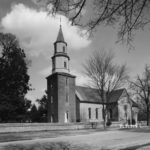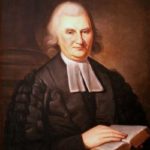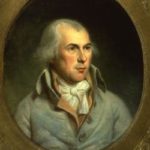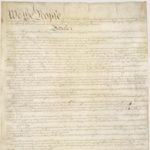Students will examine the protections enshrined in the First Amendment’s Free Exercise Clause. Students will use the Interactive Constitution to examine the Free Exercise Clause’s text and history and how the Supreme Court has interpreted it over time. In this lesson, students compare and contrast the questions, opinions, and dissents in a series of Supreme Court cases to define when the Free Exercise Clause does and does not limit government action.
Freedom of Religion: Establishment Clause
The First Amendment has two clauses related to religion: one preventing the government establishment of religion (the establishment clause) and the other protecting the ability to freely exercise religious beliefs (the free exercise clause). Students examine the First Amendment’s Establishment Clause: why it was included in the Bill of Rights, the issues it addresses, and how the Supreme Court has interpreted it over time.
Balancing Religious Freedom and Government Interests
This lesson explores the Supreme Court case Tandon v. Newsom (2021) regarding religious liberty.Throughout the COVID-19 pandemic, the state government of California along with many of its county governments placed restrictions on gatherings of people. One of their regulations had the effect of preventing more than three households gathering together at a time for any in-home prayer and Bible studies. Plaintiffs sued the state, arguing that these restrictions violated the First Amendment since many secular businesses were allowed to have more than three households of people within it at any time, and that therefore religion was being specifically discriminated against. The Supreme Court recently released a per curiam (unsigned) decision concerning the constitutionality of these regulations.
First Amendment Overview
Congress shall make no law respecting an establishment of religion, or prohibiting the free exercise thereof; or abridging the freedom of speech, or of the press; or the right of the people peaceably to assemble, and to petition the Government for a redress of grievances.
You Can’t Say That: In My Opinion

Apply what you learned about constitutional exceptions to the First Amendment by studying a modern situations. Be sure to summarize the facts of the situation and then present your opinion about whether the actions of the individual in the scenario were protected by the First Amendment. If you disagree with the court, school or law enforcement’s decision, be sure to explain why you disagree.
Religion in Colonial America

This short video examines impact of Reformed Christianity on the minds and hearts of the Framers of the Constitution. Influenced by the writings of John Locke, Algernon Sydney, and John Calvin, Founders such as George Washington and John Adams believed that religion should play an informal, though important, role in American Society. Professor Jeffry Morrison examines Adams’ contention that colonial fears of British bishops helped to inflame revolutionary sentiments.
Locke v. Davey (2004)
Does the Free Exercise Clause require states to fund religious instruction if providing merit-based college scholarships for secular instruction? This case summary shows how the Supreme Court answered that question in 2004.
James Madison and Religion

This short video reviews James Madison’s attitudes towards religion. Although he believed that religious belief was essential in a virtuous republic, he also was a religious libertarian for whom God alone was the “lord of conscience.” Professor Jeffry Morrison suggests that Madison’s Calvinist teachers (e.g., Dr. John Witherspoon) shaped his belief that government should be blind toward religion.
James Madison and the First Amendment

This short video traces the evolution of Madison’s attitude towards the religious liberty guarantees of the First Amendment. Initially opposed to a Bill of Rights as both inappropriate and dangerous, Madison’s views changed as a result of political and philosophical considerations. Professor Jeffry Morrison emphasizes Madison’s belief that religion should play a vital but informal role in the life of the republic.
The First Amendment: What’s Fair in a Free Country?

Young people have a profound sense of the importance of fairness. “It’s not fair” is often used as a one-size-fits-all argument when a child feels victimized. In situations where the child has an interest in protecting his or her actions, “It’s a free country!” is often the argument of choice. On the other hand, children are very sensitive about speech and policies they consider to have a negative effect on their well-being.
Balancing rights and responsibilities is difficult, even for the Supreme Court. This lesson demonstrates to students that doctrine of freedom of speech and its proper application is an ongoing process.